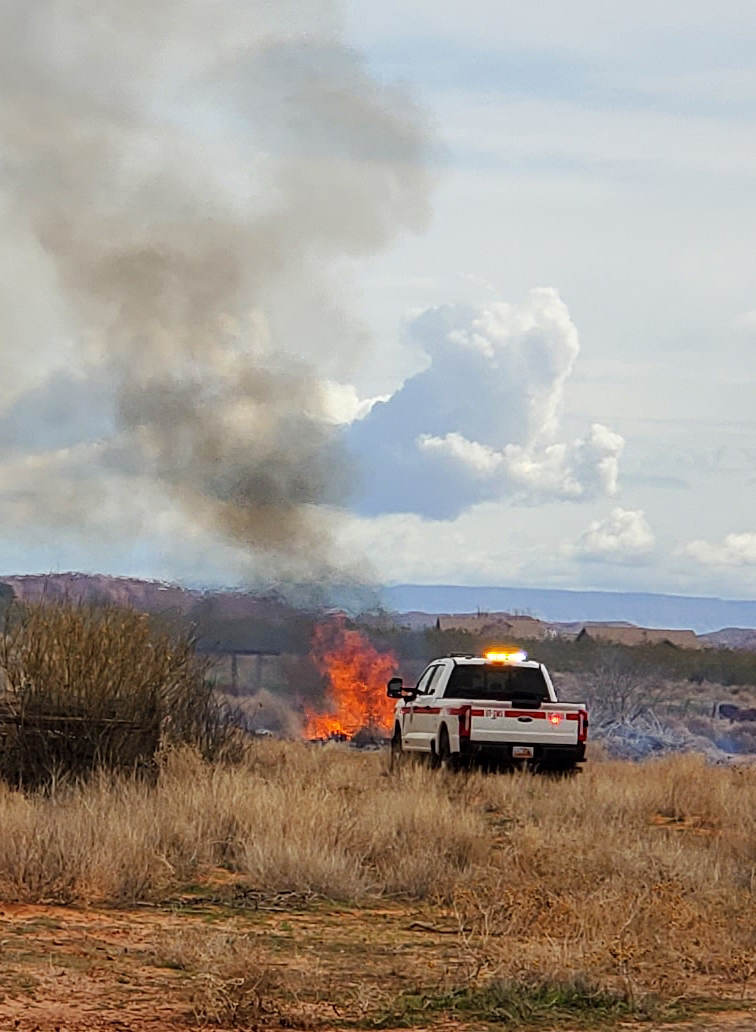Reducing Fire Risk— It’s the Homeowner’s Responsibility
With fire season upon us, it’s unnerving to read that the USDA Forest Service Wildfire Risk to Communities website reports that “Washington County has a very high risk of wildfire—higher than 98% of counties in the US.”
While factors such as high winds and low humidity are beyond human control, community action to improve community safety is well within reach. Thus, the Desert Preservation Initiative is actively working with local fire authorities, specifically with Captain Adam Heyder of the Wildland Division of Santa Clara-Ivins Fire and Resue (SCIFR) to reduce wildfire risk.
While the primary responsibility of the Wildland Division is wildfire response, the division also works directly with partner agencies and community groups to increase community awareness of strategies to reduce wildfire risk. DPI’s goal of removing the highly flammable tamarisk plays a central role in making the Ivins community Kayenta a safer place.
Heyder is currently updating the Community Wildfire Preparedness Plan, which will include mention of DPI’s work. Community Fire Planning in Utah includes a focus on fire prevention and fuel modification as well as public education measures that inform and hopefully motivate local residents to do what they can to help prevent wildfires.
Heyder reports that SCIFR uses many ways to reach out to and educate the public, including an active social media presence on Facebook and Instagram to post prevention and education messages throughout the year along with “an annual open house for the residents to attend, visit, and ask any questions they may have. We also have a presence at Heritage Days in Ivins and Swiss Days in Santa Clara.” He would also like to “get a community fire council going again to get the public involved in keeping it updated.”
The bottom line, Heyder reports, is that the work of DPI is valuable because “it’s the homeowner’s responsibility to protect their own home. If there’s defensible space around homes, it makes the community safer as a whole.” Of course, it’s not just tamarisk that should be removed, but any fuel that poses a hazard to homes, Heyder says, because “defensible space around homes saves lives and property which are our two main priorities as a fire department.”
The work of DPI not only helps educate local residents about the dangers of tamarisk but also works to remove this dangerous tree. Heyder appreciates the partnership: “Thanks for what you folks are doing to keep your community safe.”
Won’t you join us? If you are interested in learning more, volunteering, or having a review of invasive plants on your property, please contact Chuck Warren, president, (chuckwarren222@ gmail.com) or Dan Beck, volunteer coordinator ([email protected]).
